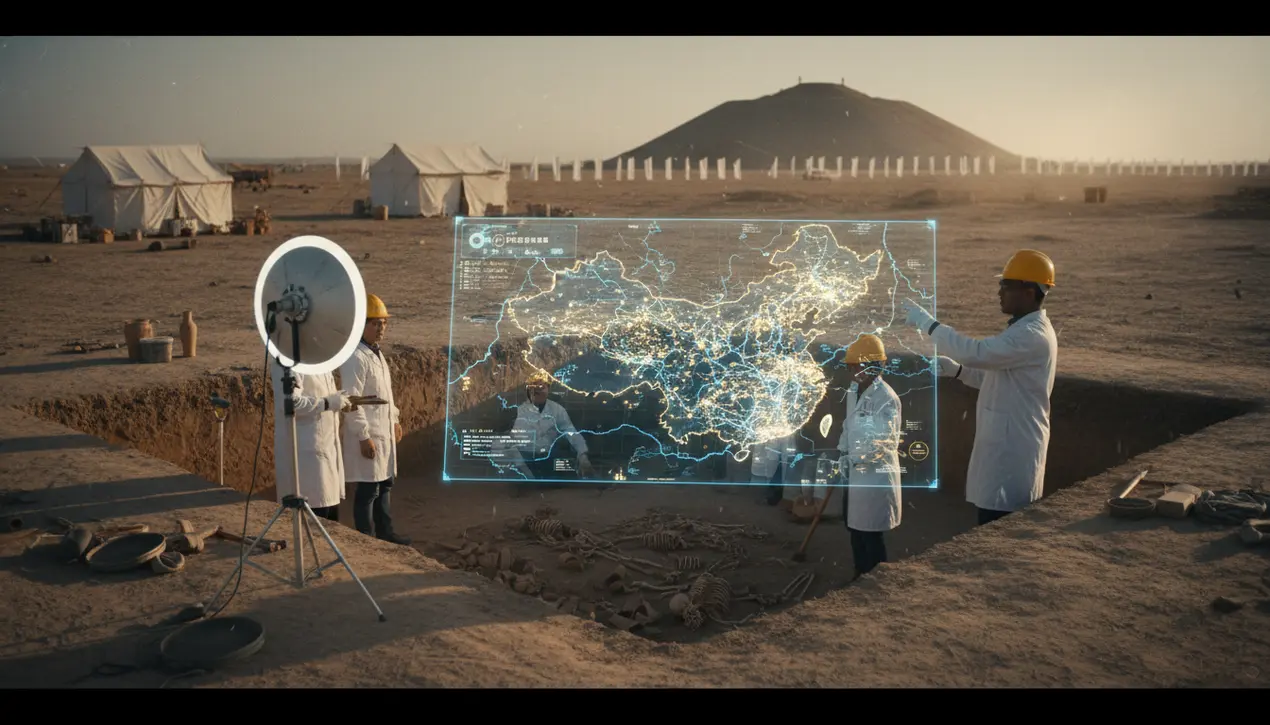
SciencearchaeologyExcavations and Discoveries
Ancient Chinese tombs reveal a hidden 4,000-year pattern
TH
Thomas Green
2 hours ago7 min read
In a stunning piece of digital archaeology that feels like charting the gravitational waves of human civilization, researchers have meticulously mapped the distribution of ancient Chinese tombs, revealing a profound 4,000-year pattern that mirrors the very pulse of political stability, mass migrations, and the unyielding influence of natural geography. Imagine looking at a cosmic map of the Milky Way, where clusters of stars represent epochs of peace and prosperity—this is precisely what the data shows.During the golden ages of unified dynasties, like the Han and Tang, when empires flourished under stable rule and the Silk Road buzzed with commerce, the landscape literally lit up with elaborate, numerous burial sites, monumental testaments to a society with the resources, time, and spiritual confidence to honor its dead with grandeur. Conversely, during the war-torn centuries, the periods of fragmentation and conflict like the bloody eras of the Three Kingdoms or the Five Dynasties and Ten Kingdoms, the map goes dark, with tomb construction plummeting—a silent, archaeological testimony to societies in survival mode, where the luxury of elaborate burial rites was a casualty of relentless conflict.It’s a pattern as fundamental as the laws of physics: political cohesion begets cultural expression, even in death. Furthermore, the research powerfully underscores how human settlement has always been a slave to environmental determinism; tomb clusters overwhelmingly coalesced in fertile, humid regions, particularly the lush basins of the Yellow and Yangtze Rivers, the cradles of Chinese civilization that offered the agricultural surplus necessary to support the dense, thriving populations capable of such enduring architectural and ceremonial projects.This isn't just about finding old graves; it's about decoding the DNA of a civilization's resilience. The ramifications are as vast as the timeline studied.For preservationists and policymakers, this digital cartography provides a crucial predictive framework, a way to anticipate where the most vulnerable, yet historically significant, sites are likely to be found, allowing for preemptive protection against the dual modern threats of urban sprawl and climate change. It lays the groundwork for a new era of heritage conservation, moving from reactive salvage to proactive, data-driven stewardship. This discovery resonates far beyond China's borders, offering a potential blueprint for understanding the rise and fall of complex societies globally, from the Maya to the Romans, suggesting that the silent, subterranean record of our ancestors might be the most honest history book we have, one that speaks not of kings and battles, but of the collective human experience shaped by the land and the peace it occasionally enjoys.
#featured
#ancient Chinese tombs
#archaeological mapping
#political stability
#population movements
#geography
#burial sites
#preservation
Stay Informed. Act Smarter.
Get weekly highlights, major headlines, and expert insights — then put your knowledge to work in our live prediction markets.
Comments
Loading comments...
© 2025 Outpoll Service LTD. All rights reserved.